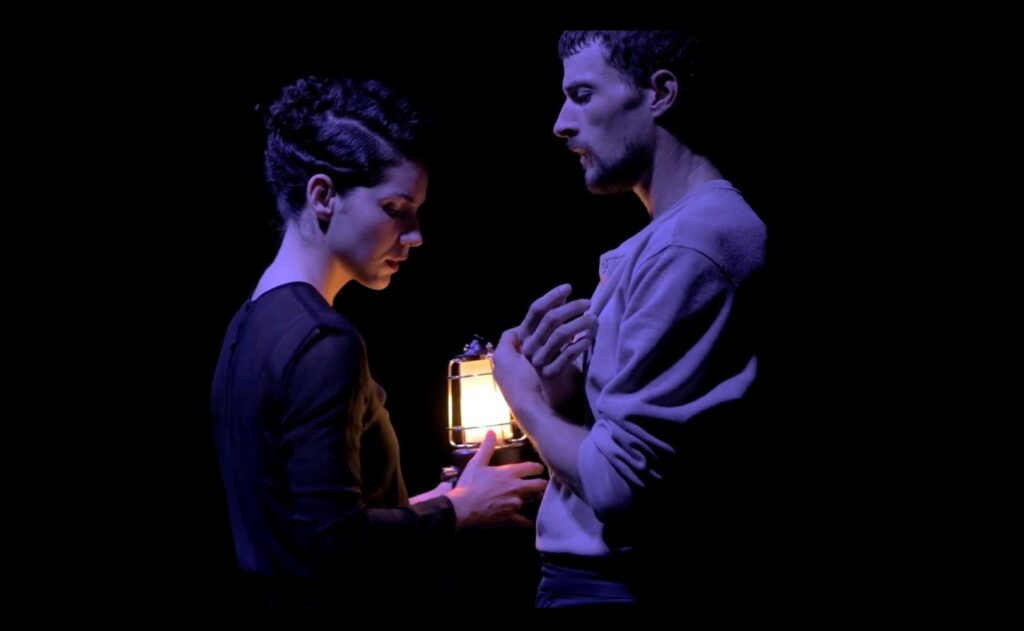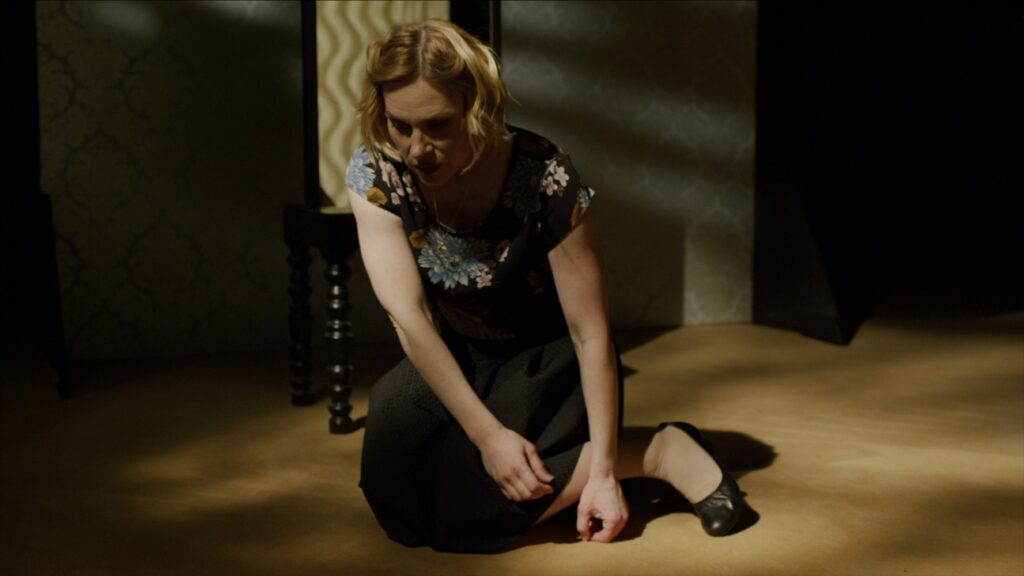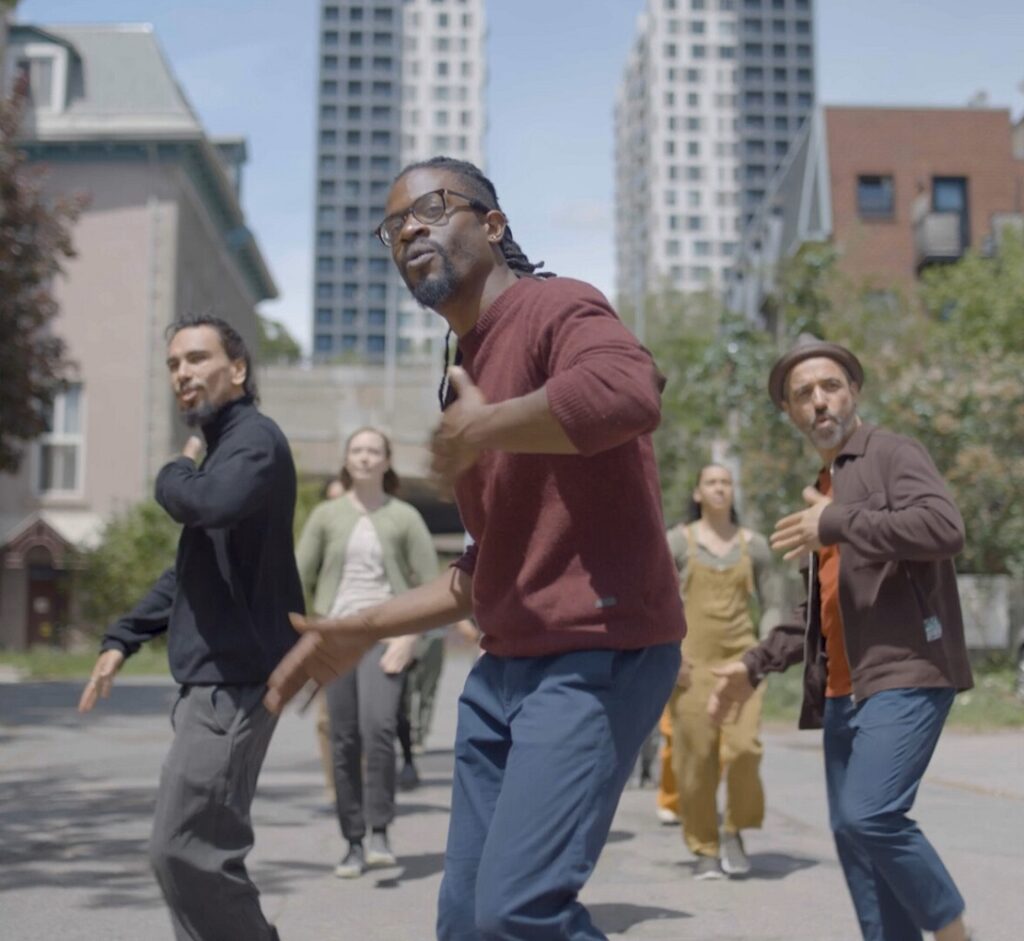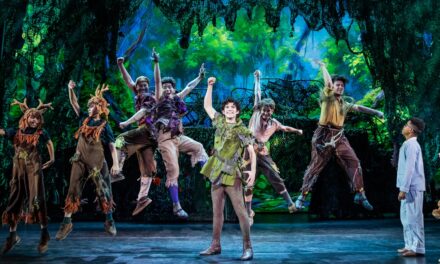Founded by Kelly Hargraves and Lynette Kessler in 2001, the Dance Camera West (DCW) is a Los Angeles based International Dance Film Festival committed to exploring the possibilities for dance in the context of cinema. Its 22nd edition opened Thursday, January 25th showcasing a curated selection of 40 films from 20 countries, each making its debut on the International, U.S., or Los Angeles stage. These films were carefully chosen from 320 submissions and represent the best of dance film creativity. The festival is more than just the screening of films as it offers receptions to hob-nob, network, and catch up with other artists, workshops, artists talks and Q&As. Over the years, the festival has been presented in various locations throughout Los Angeles, and is currently being presented in the Barnsdall Gallery Theater at Barnsdall Art Park, 4800 Hollywood Blvd. LA.
The opening night reception was presented by the Instituto Cervantes of Los Angeles and featured the guest of honor, Javier De Frutos. Spanish Director, Choreographer and Designer, who was named one of 2016 most influential people in Dance in the U.K. by the London Evening Standard. Three of his films were presented: “The Burning Building,” “Whoever You Are,” and “The Sequestered Disc.”
Kelly Hargraves, as Artistic Director of the entire festival, kicked off the evening with a warm welcome and gratitude for helming one of the oldest, female led Film Festival in Los Angeles. She is extremely personable, warm, and generous in her nature with a lovely sense of humor. She is Canadian born, with a Communications Studies degree from the University of Windsor, a Contemporary Dance degree from Concordia University, and a Masters in Dance Film from New York University. She has produced and directed several dance films and is often an invited speaker at Dance Film Festivals.
As I do not wish to take up space in repetition, for more information on either Kelly Hargraves or Javier De Frutos, please refer to their two interviews at ladancechronicle.com by Jeff Slayton, Editor in Chief. Hargraves article was published October 15, 2018 when she took over as Artistic Director of DCW, and Frutos was interviewed January 22nd of this year.
Thursday, January 25th
Opening Reception sponsored by Instituto Cervantes of Los Angeles.
– Offering (Marlene Millar) 5:00 Canada
This film consists of a procession of individuals, all singing and moving to body percussion, moving through a Montreal neighborhood. While everyone in the group partakes of body percussion, certain individuals break out into dance and rejoin the group. On display is gigue, contemporary, tap, street dance and circus arts. They move down the middle of the street and, through the angle of the camera lens take up the entire frame becoming as imposing and important as the buildings they pass. They ARE the neighborhood. This film underlines community and a sense of belonging to the human tribe through rhythmic communication and shared experiences. The language of rhythm is shared and all chime in. This is a wonderful and uplifting treatise of the possibility of human connection and a sentiment so desperately needed now by the human tribe in general. It was heartfelt and straightforward and avoided the maudlin that so often infuses feel-good humanitarian connection. Choreographer -Sandy Silva, Cinematographer -Zachary Fay.

DCW International Dance Film Festival – Moth (United States) by Kate Weare and Jack Flame Sorokin – Courtesy of DCW
– Moth (Kate Weare, Jack Flame Sorokin) 5:28 United States
Moth is extremely specific in visuals and sound as you only see what the director wants you to see. The camera shots are all close and tight. Music is Nicole Vaughan-Diaz’s rendition of “Don’t Let Me Be Misunderstood.” We see a couple, a man and a woman who is holding a lantern, the only light source in the piece. He is constantly in her space and trying to garner her attention. His attempts at communication are not reciprocated. She is aware of his presence and puts up with it rather than invites it. The editing on this film is fantastic as it betrays his interest and her annoyance, or at least her indifference, at every frame. The framing is tight on close-ups and we see through the broken light of the lantern all that transpires. It is a metaphor for male desire for the female, objectification and finally, loss. The way the camera was utilized defined the character of the piece – brilliant and smart, to the point.

DCW International Dance Film Festival – Branché (Canada) by Janique L. Robillard and Eric Bates – Courtesy of DCW
– Branché (Janique L. Robillard, Eric Bates) 15:50 Canada
Here there is the juxtaposition of human bodies with nature and cityscapes. A forest backdrop serves to frame human sculptures of many bodies coming together in support of each other. Circus and balancing arts are utilized to underline the delicacy of human existence within the confines of natural resources. Much of this is female driven and echoes a mother-nature perspective on saving the environment. There is a phenomenal sequence of a single man in the trees using his circus training and gymnastic skills to navigate the branches by brachiating and foot holding. This sequence could have been a National Geographic special on Homo-Sapiens’ descent from a common ancestor with Chimpanzees! It also underlined to a clear degree humankind’s evolution in tandem with so many environmental conditions. The moral of the story – you are adapted to live in this nature, destroy it and you destroy yourselves. Not a new cautionary tale, but an extremely beautiful and refreshing one that hits us where it counts, in our bodies which are specially adapted for life here on Earth, with THIS Flora and Fauna, and THIS gravity, and THIS biodiversity, and no other. Cinematographer – Kes Tagney.
– Écho (Édouard Lock) 23:10 Canada
This film focused on a single ballerina and her extraordinary port-de-bras and gestures. She is lying on a mirrored surface displaying a twin image for the camera. Much of it in the dark and close up we see her limbs extend and wrap and curl in variation. The lighting is seen as if reflecting off the surface of water, harkening back to the origin of Écho herself. She seems unsure of herself and seeks approval through her gaze directly at the viewer. And then one remembers how she fell in love with Narcissus and he loved his own reflection rather than her. Is she falling in love finally with HER own reflection? Perhaps. Is it a Ballet dancer’s cautionary tale to not fall in love with their own reflection in the mirror as they train and rehearse? Perhaps. The camera pulls back to reveal that she is gazing into a mirror on the ground in the center of a large empty stage, in a vast unlit theater. Once one attaches the visuals of the film to the story of Écho from Ovid’s Metamorphosis, it is clear just how poetic and illuminating the camera work is. The various shots in their order show us her insecurity, her passionate gaze, and her enduring hope for a love she cannot have. Kudos to Rachele Buriassi as Écho, and Étienne Boilard as Cinematographer.
– Memo (Thor Brenne) 9:28 Norway, Choreographers – Trine Lise Moe, Even Eileraas
This film tells the tale of two young lovers, male and female, who reflect on their relationship four weeks after they have broken up. It is filled with realizations of emotion and cause and effect. In three sections titled: 1. Pretend, 2. Receive, and 3. Reach, they ponder what they wanted from the other and what they both failed to give. This film was harder to get behind as the couple was very young and first love often goes away through expectations not met and personal hurts perceived. It did not offer anything new in terms of its subject matter and the filming of two young lovers who are together and then apart was perhaps best illustrated by Franco Zeffirelli in his 1968 ‘Romeo and Juliet’.

DCW International Dance Film Festival – Anyone Who Knows (United States) by Kate Harpootlian – Courtesy of DCW
– Anyone Who Knows (Kate Harpootlian) 6:54 United States
In this film Kate Harpootlian explores a woman’s sadness, isolation, and rage at her disintegrating relationship. She is alone in her house filled with memories of her and her lover. Her memory now plagues her, and she erupts into different aspects of frustration and pain of loss. This film was a powerful and poignant illustration of loss and frustration. The woman, portrayed by Marla Phelan wanders throughout her house remembering tender embraces and the company of her husband, now absent from her life and the house. Whomever has lost a loved one or gone through a break-up from intense love knows full well the emotional devastation it can cause and the bleakness of outlook it engenders. This short captures it all through the movement and acting of Phelan coupled with the intimate camera work of the cinematographer, Jon Nazareth.
– Greyhound (Lauren Edson) 6:16 United States
This short follows the antics of two friends living in an abandoned Greyhound bus station. It is the most lighthearted of the films presented with a whimsy to it that is infectious. The young couple have a great deal of fun as they dance around and through the station. At one point they hear a phone ringing and feel compelled to answer it, perhaps because there is no one left to call? We are left wondering just how isolated their situation is. This film was a fun romp and welcome breath of fresh air that did not take itself too seriously. The two dancers were well matched and very capable as they had a great time with the choreography. Dancers – Jacob Beasley, Cydney Covert. Choreography – Lauren Edson
Javier De Frutos Films:

DCW International Dance Film Festival – The Burning Building (United Kingdom) by Javier De Frutos – Courtesy of DCW
– The Burning Building 10:50 UK 2021
This piece by De Frutos was inspired by a quote from Tennessee Williams: “We live in a perpetually burning building, and what we must save from it, all the time, is love.” Filmed in black and white, we follow a young couple of dancers who are situated in a circle of light with four chairs equidistant from each other at the edge of the circle. On each chair are sweats, water, warm-ups, and the usual dancer detritus. They move in a circle but never get anywhere and it is impossible to know how long they have been in this place going in circles. A metaphor for life. At first the repetition was a little grating but became necessary and evident to get the point across that they are in a loop going nowhere. This film could have easily been a dance version of a Twilight Zone episode by Rod Serling. The Dancers were beautiful and good actors as well – Sofia Linares, Shuailun Wu.

DCW International Dance Film Festival – Whoever You Are (United Kingdom) by Javier De Frutos – Courtesy of DCW
– Whoever You Are 6:09 UK 2022
This film is an adaptation of Walt Whitman’s poem “Whoever you are holding me now in hand.” In it De Frutos mirrors Whitman’s specific choice of words with extremely specific movement vocabulary. In this case the two dancers in the film are ‘speaking’ Whitman’s words to each other and to themselves as gestures. We follow them along their various patterns throughout an old house and must ‘listen’ to their emotions. It is filmed in a house ostensibly occupied by the couple, making the interactions both casual and intimate. This film reminded me of Alfred Hitchcock a bit, as it had the feeling that something was going to happen that we, as an audience, were not prepared for. There was suspense in the camera work. It kept us interested and wary at the same time. Dancers – Rae Piper, Paul Chantry.
– The Sequestered Disc 14:31 UK 2023
This film may be considered part two of “Whoever You Are.” The two dancers, husband and wife, from “Whoever You Are” are interviewed and asked a series of questions which reveals their inner truths and concerns, fears, and foibles. It slowly turns to interrogation and the two become uncomfortable with the baring of their souls and revealing a little too much of themselves. It is reminiscent of a few of Dick Cavett’s revealing interviews on his talk show that got a bit out of hand. The speed is quick, and we need our attention on their movement as well as their words in order to get a clear picture of what exactly is being said. This is a smart and sharp take on communication between couples and how they think they know one another well. Dancers – Rae Piper, Paul Chantry.
Friday, January 26. Hollyhock House Happy Hour 3:00pm
“Built between 1919 and 1921, Hollyhock House was Frank Lloyd Wright’s first Los Angeles commission and an ode to California—its freedom and natural beauty. Designed for Aline Barnsdall, this house was intended to be the centerpiece of a 36-acre arts complex, which was only partially realized”.
Reception 6:00 – 8:00pm sponsored by Délégation Générale du Québec
– On The Moon (Cameron Cofrancesco) 2:18 United States
On The Moon is set in the doorway between a man’s bedroom and living room. There are two lamps without shades on the floor and the angle of the camera covers about three feet from the floor to the man’s knees. He is in shorts and dark socks and his feet are moving to his commentary of going to the moon. I wasn’t sure why he went to the moon, or how he got to the moon, or what his stockinged feet had to do with getting to the moon, as it was not clear in the film.

DCW International Dance Film Festival – U.W.D. – Until We Die (Canada) by Brigitte Poupart and Myriam Verreault – Courtesy of DCW
– U.W.D. – Until We Die (Brigitte Poupart, Myriam Verreault) 19:22 Canada
This is a post-apocalyptic world where no one speaks or can speak. Many of the haunting scenes are in abandoned places with objects in disarray or degenerating. Some of the characters lament their loss through imagination and visuals of others long gone. It is a sad landscape where people reveal their wants and desires through movement. There is a beautiful sequence where some characters are moving in and out of a car while it is driving down the road. This must have been a very complicated and dangerous sequence to film, and it shows the great imagination of the director and cinematographer to their full extent. This was one of the most poetic films and the cinematography was instrumental in it winning the best film in the festival. It succeeded in promoting an air of loss and times-gone-by without hitting the audience over the head. It had subtlety and nuance and a quiet determination. Cinematographer – Patrick Morin.

DCW International Dance Film Festival – Carried In Silence (Finland) by Vilma Tihila – Courtesy of DCW
– Carried In Silence (Vilma Tihilä) 11:18 Finland
This film is an “extract of a relationship between a mother and a daughter” according to the program notes. I found it to be much more as the camera work was exquisite and the set of repeating doors which the daughter goes through works as a metaphor for the mother as a girl wanting to grow up and get on with life. In a sense the relationship could be construed to be between a young girl and woman she is to become upon adulthood with all of her loss and compromise intact. It was a powerful vignette of female sense and power. The camera work was close-up and beautiful, sensitive, and quiet. Mother – Kaisa Niemi, Daughter – Aimi Katinas, Cinematographer – Perttu Inkila, Choreographer – Sanni Kriikku
– Reconstruction (Pia Andell) 17:21 Finland
This opens with a woman visiting a man and they share a letter and a photo album. We then see that they shared a night of dancing in the 80’s where they both grew up over the course of the one night. There is a loss of innocence but also a better definition of self because of the experience. The choreography here was fantastic and caught the antics and movement of the two when they were young in the 80’s. It was entirely believable and enchanting to see what happened to make them grow up. Young dancers – Jessica Piasecki, Aarni Arjas, Choreographer – Lassi Sairela.

DCW International Dance Film Festival – Life Hacks For Lovers (Israel) by Marc Grey – Courtesy of DCW
– Life Hacks For Lovers (Marc Grey) 14:30 Israel
This film hysterically caught the boredom, anxiety, and angst inherent in the dating scene anywhere in the world. We follow a woman who is on a date and cannot focus on the man across the table as he pontificates about the best restaurants and food in the city. Her mind begins to wander, and she dances her frustration out. In a telling and silent scream sort of way we sympathize with her predicament. She returns to her apartment with a purpose. She gathers all sorts of household goods, glue, tape, needle and thread, and saw and gets to work on the dining room table. Finished she goes to bed exhausted. The next day the camera pans down to the table to reveal what she had spent all night building – a naked, attractive man. He wakes up and begins to feel his body moving. She wakes and engages with him over a montage of time and intimate blissful moments. He quickly learns how to speak and then Pandora’s Box opens as he becomes a mansplainer and fast-talking mover and shaker. He rises in the corporate world and quickly becomes unbearable to her. I will not tell the ending as it is an engaging twist.
This was a humorous and smart romp that skewered the dating scene between the sexes. It was light and very funny, with a surprise turn-about that cut to the heart of the matter between the sexes. The camera work was fantastic, showing every nuance of emotive feeling between the two and taking us along on the psychological discovery of the protagonist. This film is smart and telling and entirely applicable to today’s dating scene. Dancers – Bobbi Smith, Or Schraiber, Cinematographer – Ziv Berkovich.
All of these short films had something important to say and through movement made it poetic and powerful, sometimes sad, sometimes funny and light. Angst, frustration, isolation and despair were equally presented with joyous, communal happiness and light-hearted fun. So much of dance translates perfectly to film without losing any of its power to make one feel. One has only to see the recent “Poor Things” or “Saltburn” where dancing is integral to the plot. The marriage of Dance and Cinema is a match made in Heaven for its power to move us and make us feel. Shorts deserve equal attention as feature length films and happily this festival proves it in spades. See Dancecamerawest.com for an overview of all discussed here.
For more information about Dance Camera West, please visit their website.
Written by Brian Fretté for LA Dance Chronicle.
Featured image: DCW International Dance Film Festival – Life Hacks For Lovers (Israel) by Marc Grey – Courtesy of DCW













